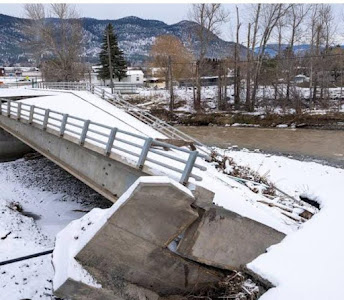Skip to main content
canada earth quake

- Yes, Canada is a country that experiences earthquakes. Canada is located on the Pacific Ring of Fire, which is an area known for its high seismic activity. The Ring of Fire is a region where several tectonic plates meet, resulting in frequent earthquakes and volcanic activity.
- Some of the most seismically active regions in Canada include the west coast of British Columbia, particularly Vancouver Island, as well as parts of the Yukon, Alberta, and the northern territories. These areas are prone to both moderate and large earthquakes.
- One of the most significant earthquakes in Canadian history occurred in 1906 in the coastal city of Vancouver. Known as the Great Vancouver Earthquake, it had an estimated magnitude of 7.3 and caused widespread damage. Since then, several notable earthquakes have been recorded in various parts of Canada.
- It's important to note that while earthquakes can occur in Canada, they are generally less frequent and less severe compared to countries located along major fault lines, such as Japan or parts of the United States. Canada has implemented measures to ensure infrastructure resilience and public safety in the event of an earthquake.
.jpeg)
- Certainly! Here is some additional information about earthquakes in Canada:
- British Columbia: The province of British Columbia experiences the highest number of earthquakes in Canada. This is due to its location on the active tectonic plate boundary between the Pacific Plate and the North American Plate. The region is prone to both shallow and deep earthquakes, with some occurring along the offshore subduction zone known as the Cascadia Subduction Zone. This area has the potential for large, destructive earthquakes.
- Haida Gwaii Earthquake: One of the most significant earthquakes in recent Canadian history occurred off the coast of Haida Gwaii (formerly known as the Queen Charlotte Islands) on October 27, 2012. It had a magnitude of 7.8 and was felt across western Canada. Although there was no significant damage or casualties, it serves as a reminder of the seismic activity in the region.
- Yukon and Northwest Territories: These northern regions of Canada also experience seismic activity, although it is generally less frequent compared to British Columbia. The earthquakes in these areas are often associated with faults related to the tectonic interactions between the North American Plate and the Pacific Plate.
- Eastern Canada: While seismic activity is less common in eastern Canada, there have been notable earthquakes in this region as well. In 1663, the Charlevoix-Kamouraska earthquake struck the St. Lawrence River region, estimated to have a magnitude of around 7.9. It caused significant damage to settlements along the river.
- Monitoring and Preparedness: Canada has a robust earthquake monitoring and research network to detect and study seismic activity. The Natural Resources Canada's Earthquakes Canada program is responsible for monitoring earthquakes and providing information on earthquake hazards to the public. In regions prone to earthquakes, building codes and standards incorporate seismic resilience measures to ensure the safety of infrastructure.
- It's important to note that earthquakes are unpredictable, and while Canada has measures in place to mitigate risks, it is crucial for individuals to be prepared and educated about earthquake safety, especially in regions prone to seismic activity.

.jpeg)


Comments
Post a Comment